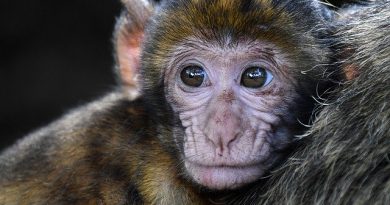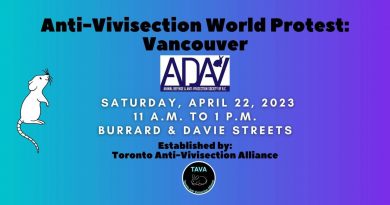Dr Marjorie Cramer about Plastic Surgery
From: https://antidote-europe.eu/en/marjorie-cramer-plastic-surgery/
I was born in England and moved to the United States as a teenager. I received a BA degree from Barnard College at Columbia University and an MD degree from the State University of New York. I completed 6 years of residency in both general surgery and plastic surgery. Following this I had a full time practice of plastic surgery including cosmetic, reconstructive, hand and burn surgery in New York City for 24 years. I am a diplomate of the American Board of Plastic Surgery and a Fellow of the American College of Surgeons. I have been a member of the Committee on Legal Issues Pertaining to Animals at the Association of the Bar of the City of New York where I co-authored a paper on animal use in experimentation and testing. I was the vice president of the New England Anti-Vivisection Society for several years. I have spoken on and debated the subject of vivisection on many college campuses and other venues in the United States and Canada. I am now retired. In recent years I have testified to legislators in 2 states on the importance of allowing high school students to opt out of dissection classes since many of these young people have a strong ethical objection to the practice.
INTERVIEW WITH DR MARJORIE CRAMER ABOUT PLASTIC SURGERY
Antidote Europe (AE) : May we begin by saying how honored we are to be able to interview a plastic surgeon for the first time in our series of interviews. Can you describe at what point during your studies or your career you came across animal experimentation and what aspect of it upset you the most ?
Dr Marjorie Cramer (MC) : In school in England we did not have to dissect but in college I took a biology course that required killing mice. This was accepted at the time as a step on the path to becoming a physician and I tried to ignore my aversion to it. When I was in medical school in the 1960s, one of 30 women in a class of 200, I and the other women were frequently harassed and I tried not to be singled out in any way. It was in this climate, in the first few months of medical school that I arrived in the physiology laboratory to find that each group of 4 student had been assigned to a cat who had been anesthetized, restrained, and had their limbs flayed open to expose the muscles. Our assignment was to inject various drugs and record the results. I was so traumatized by this nightmarish event that I could barely think coherently. I assumed that something was wrong with me for not being able to deal with the laboratory with equanimity and I hid my anguish. During my residency training I was required to spend a year doing animal experiments. After a few months I asked to be allowed to do a paper based on literature research, pleading a severe allergy to rats. It did not occur to me at this juncture to reveal that I found causing suffering to sentient beings completely impossible for me. It took many years and questioning of commonly held assumptions for me to sort out the reality that harming animals is not only not essential to human health but actually counter-productive to it, and that treating any living being with cruelty could not possibly engender compassion for sick patients.
AE : Animals such as rodents, rabbits and pigs are commonly used to assess the skin healing properties of various ointments and creams following experimental cuts and burns to the skin of the animals. Do you consider the use of animal models for the study of skin healing and scar formation to be evidence based or not ?
MC : It is not difficult to observe that anatomy and physiology are species specific and that many human problems with wound healing are not even encountered in non humans. This renders results from animal experiments that have been designed to solve human problems at best suspect and at worse dangerous. Animal laboratory studies are often considered more “scientific” or valuable than human clinical results and can seem intuitively appealing. They are often easier to design and quicker to complete that human studies which by necessity must generally be long term and ongoing. There are numerous examples in the wound healing literature where animal data were misleading and actually delayed investigation in human patients. Pig experiments with skin flaps (full thickness skin grafts which are not detached from their base) come readily to mind. Flaps that worked extremely well in pigs did not give the same results in humans. It took years to work out that the skin blood flow in pigs had major anatomic differences from that of humans. In my experience as a clinician, dealing with acutely injured people, I do not recall any examples of clinical decisions as to wound care being made based on non-human data. By definition evidence based medicine requires the “best available” research evidence as to whether and why a treatment works. In today’s world of ever advancing technology and sophisticated knowledge, animal experiments seem a crude relic of the past and data obtained in this manner are always suspect until human data are obtained.
AE : The silicone breast implant scandal has negatively affected the lives of many thousands of women worldwide. An article of ours was published in which we criticised the reliance on animal tests as contributing to the regulatory failure to protect the health and well being of consumers. Would you like to comment on this scandal from the perspective of a plastic surgeon ? Here is a link to the article : http://jrs.sagepub.com/content/106/5/173.long
MC : The breast implant saga is complex. Unfortunately despite the fact that many thousands of women in the United States have undergone breast implant surgery, virtually no meaningful post-market surveillance has been done. We know that certain complications are possible after breast implantation including scar contracture with resultant compression of the implant and hardness, local infection or inflammation, implant rupture, migration of the fill in silicone filled implants, and possible auto immune illness. But beyond this we know remarkably little. Unfortunately the economic issues of an extremely lucrative product drive the marketing and sale of implants. It is in the interests of the manufacturers to stress the positive aspects of the surgery (the overwhelming number of patients have been happy with their results) and downplay or hide the negative ones. Animal studies have been done both by clinician researchers and by the manufacturers but there are none that either predict the problems encountered or are useful clinically. Most of the studies have been short term ones designed to overcome the problems of breast hardening by changing the shape of the implant or the composition of either the shell or the fill. To have predicted and avoided the problems that have occurred would have required that long term statistics derived from post surgical patients be accumulated over time. These studies could lead to further human based studies that would target women at risk for complications and find modalities for avoiding problems.
AE : Is it possible in your opinion to become a plastic surgeon without experimenting on animals ?What non animal alternatives would you suggest to researchers who are adamant that there is no replacement to animal use in the field of cosmetic surgery ?
MC : Many of the animal laboratories in medical school have been phased out as relics of the past and animal based “research” during residency has never been done to improve clinical care but rather to provide publications and boost academic credentials. Some people think that surgeons learn to operate by practicing on animals but this is a myth. Surgery is learned incrementally from assisting teachers and by operating under close supervision. There are many human based methods for learning surgery, even complex techniques such as microvascular surgery. Dr.Emad Aboud at the University of Kansas, for example, has developed human based models using cadavers, from patients who have willed their bodies for the purpose, with a highly realistic blood pumping mechanism so that surgeons can practice complex new techniques. Ultimately in the area of purely cosmetic surgery there is no justification for harming animals. An adjunctive procedure that has become very topical recently is the use of botulinum toxin (Botox). The LD50 test, in which various doses of the toxin are administered to groups of animals to see which dose will kill 50 percent of them. Fortunately there are newer non animal tests for botulinum toxin that have been developed and are now being phased in.
AE : thank you so much for sharing your expertise with us and our readers. Are there are other thoughts that you would like to share in conclusion ?
MC : I would like to emphasize that it took me many years to look critically at animal experimentation and understand the inefficiency of the modality. Much of this was because of my desire to fit into a field that was difficult to enter and in which to succeed. Fortunately young people today are more willing to speak out, sometimes to the detriment of their careers, and change remnants of the past that need to be changed.




